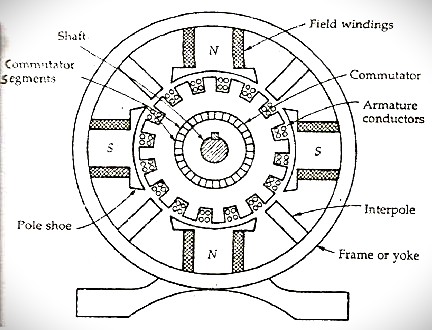A DC generator and a DC motor share the same construction, which means the same machine can operate in either mode. For this reason, both are collectively known as a DC machine.
Energy Conversion Principle:
- In a DC generator, mechanical input is transformed into electrical output through electromagnetic induction.
- In a DC motor, electrical input is converted into mechanical output by the action of electromagnetic force on a current-carrying conductor placed in a magnetic field.
The main components of a DC machine include:

- Stator:
The Stator is an essential part of the DC generator, and the main function of this is to provide the magnetic fields where the coil spin. This includes stable magnets, where two of them are with reverse pole facing. These magnets are located to fit in the region of the rotor. - Field System (Poles and Field Windings) – Generates the magnetic field.
- Armature Core – Houses the conductors and provides a path for magnetic flux.
- Armature Windings – Carry current and interact with the magnetic field.
- Commutator – Maintains proper current direction for smooth operation.
- Brushes – Ensure electrical contact between stationary and rotating parts.